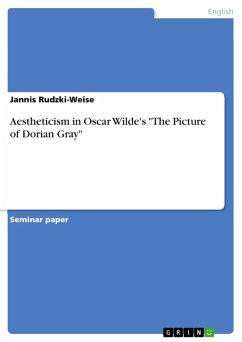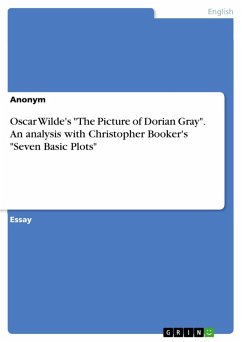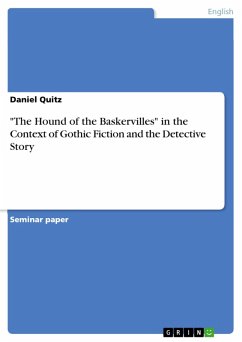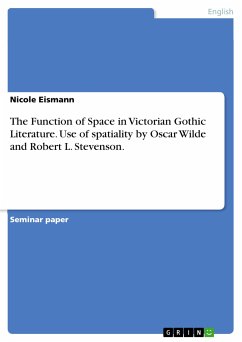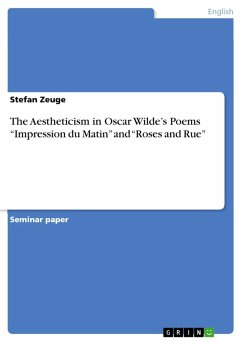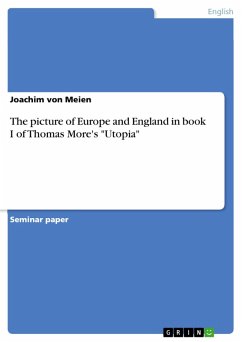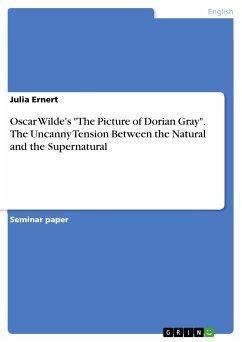
Oscar Wilde's "The Picture of Dorian Gray". The Uncanny Tension Between the Natural and the Supernatural (eBook, PDF)
Versandkostenfrei!
Sofort per Download lieferbar
Statt: 16,95 €**
13,99 €
inkl. MwSt. und vom Verlag festgesetzt.
**Preis der gedruckten Ausgabe (Broschiertes Buch)
Alle Infos zum eBook verschenkenWeitere Ausgaben:

PAYBACK Punkte
0 °P sammeln!
Seminar paper from the year 2022 in the subject English Language and Literature Studies - Literature, grade: 1,0, University of Hildesheim (Institut für englische Sprache und Literatur), course: Uncanny Elements in 19th-Century Fiction, language: English, abstract: In this paper, it is argued that there is a tension between the natural and the supernatural which contributes to an uncanny atmosphere in Oscar Wilde's novel "The Picture of Dorian Gray". In order to fulfil the objectives of this thesis, this paper applies a Freudian psychoanalytic perspective to interpreting the 1891 version of t...
Seminar paper from the year 2022 in the subject English Language and Literature Studies - Literature, grade: 1,0, University of Hildesheim (Institut für englische Sprache und Literatur), course: Uncanny Elements in 19th-Century Fiction, language: English, abstract: In this paper, it is argued that there is a tension between the natural and the supernatural which contributes to an uncanny atmosphere in Oscar Wilde's novel "The Picture of Dorian Gray". In order to fulfil the objectives of this thesis, this paper applies a Freudian psychoanalytic perspective to interpreting the 1891 version of the novel. Thus, Sigmund Freud's essay The Uncanny (1919) serves as a basis for the novel's analysis. The paper therefore, begins to analyse the supernatural process of (de)humanisation, i.e. it illustrates how the boundaries of Dorian being human and of the portrait being a lifeless object blur. Section 2.2 explores the supernatural (anti)aging process, i.e. it focuses on the supernatural event of Dorian's portrait aging in his stead while he remains young and beautiful. Section 2.3 emphasises the supernatural process of changing in Dorian's and his portrait's character, concentrating on the connection be-tween Dorian's moral decay and the corresponding changes in his portrait's appearance. However, it will be illustrated that not only Dorian is responsible for the changing of the portrait but that the portrait appears to be supernaturally responsible for some of Dorian's deeds. In section 2.4 the novel's supernatural ending is presented before a conclusion is drawn in section 3.
Dieser Download kann aus rechtlichen Gründen nur mit Rechnungsadresse in A, B, BG, CY, CZ, D, DK, EW, E, FIN, F, GR, HR, H, IRL, I, LT, L, LR, M, NL, PL, P, R, S, SLO, SK ausgeliefert werden.





